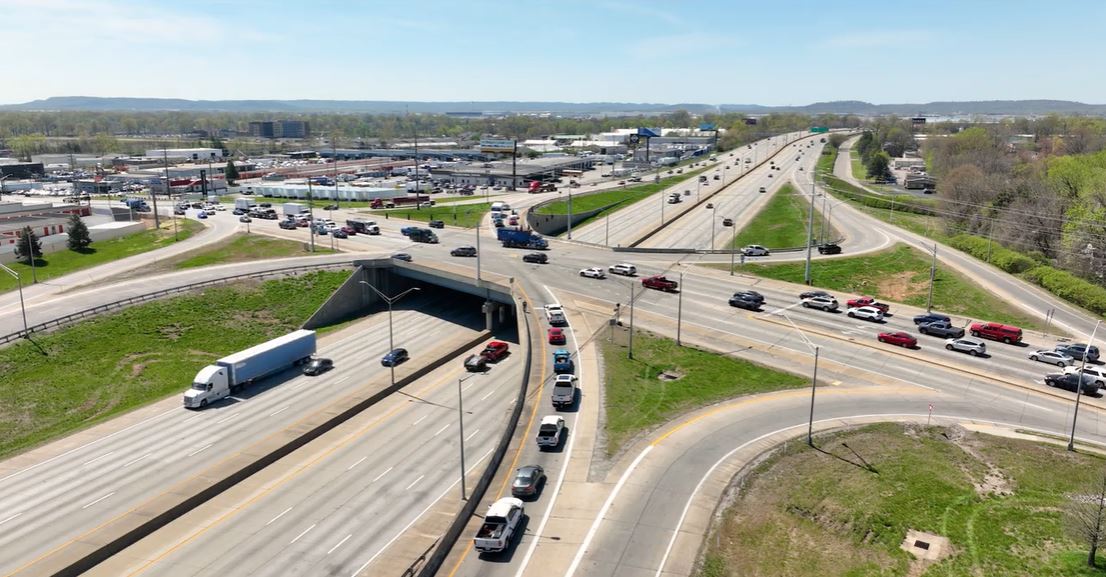The design allows for left-turning vehicles coming from opposing directions to turn simultaneously, without crossing paths. This enhances safety by reducing the number of places where vehicles cross paths and improves efficiency by allowing more vehicles to drive through the intersection during a signal cycle.
The SPUI (pronounced SPOO-EE) can be designed as an overpass or an underpass. It consists of:
-
one signalized intersection,
-
a main road, and
-
four freeway ramps that all begin or end at the single, signalized intersection.
In a SPUI, traffic signals at the main intersection guide all left-turning and straight-forward moving vehicles. Vehicles turning right are guided by stop or yield signs, away from the main intersection.
SPUIs are also known as:
-
Urban Interchanges
-
Single Point Interchanges (SPI)
-
Single Point Diamond Interchanges (SPDI)
Benefits
-
Enhanced safety – vehicles cross paths at only one location within a SPUI, which reduces the risk of potential vehicle crashes as compared to a conventional intersection.
-
Increased efficiency— traffic signals at SPUIs operate in three phases as opposed to four phases at conventional interchanges, which increases “green light” times and reduces delays.
-
Increased capacity – the SPUI design allows for left turns to occur simultaneously and at higher speeds, which increases the number of vehicles that can travel through the intersection.
-
Fewer traffic signals – the SPUI channels traffic into one intersection, as opposed to two intersections like in a conventional interchange. Fewer intersections mean fewer traffic signals, which also means fewer delays for drivers.
-
Reduced right-of-way impacts – SPUIs have a smaller footprint than conventional interchanges, which reduces the impact on the environment and nearby businesses and residences.
When to use a SPUI
A SPUI design is effective for interchange locations with:
-
high left turning traffic volumes
-
a need for increased vehicle capacity
-
limited space for construction
How to use a SPUI
All vehicle traffic within a SPUI should follow traffic signals and signs.
Pedestrians in SPUIs should follow crosswalks and bicyclists may use pedestrian paths or follow the flow of traffic.
In a SPUI, traffic signals at the main intersection control the flow of traffic for all left-turning and straight-forward moving vehicles. Yield or stop signs guide all right-turning vehicles.
SPUIs in Kentucky
US 60/KY 4 Intersection in Fayette County
KY 864/I-264 intersection in Jefferson County

